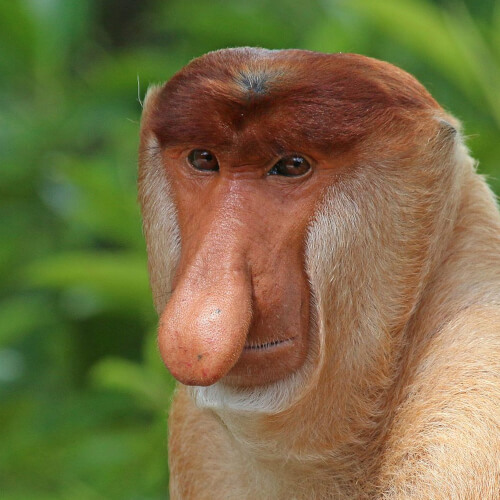


| Taxonomic Rank | Name | Common Name |
|---|---|---|
| Kingdom | Animalia | Animals |
| Phylum | Chordata | Vertebrates |
| Class | Mammalia | Mammals |
| Order | Primates | Apes, lemurs, lorises, monkeys, tarsiers |
| Suborder | Haplorhini | Apes, monkeys, tarsiers |
| Infraorder | Simiiformes | Monkeys and Apes (incl. humans) |

Monkey is the common, or non-scientific, name used to refer to several species of primates, the group of mammals that also includes apes and humans. Monkeys are known for their high intelligence, adaptability, and complex social behaviors.
Monkeys range in size from the tiny pygmy marmoset, which can be as small as 12 cm (4.7 in), to the mandrill, known to grow as large as 95 cm (37 in). Each species has unique characteristics, such as the spider monkey’s gripping tail that functions like an extra limb, or the distinctive blue and red face of the mandrill.
Monkeys can be found all over the world. The "New World monkeys" inhabit Central and South America's tropical rainforests. "Old World monkeys" live in various environments in Asia and Africa, ranging from rainforests to savannas and even mountain areas. The majority of monkeys are tree-dwelling, but several species also live primarily on the ground.
Monkeys' diets vary greatly by species and environment. Most species are omnivorous, consuming fruits, leaves, seeds, insects, spiders, and even small mammals. Monkeys use their intelligence to be highly adaptable and often find food in clever ways. The capuchin monkey, for example, is known for its ability to use tools to access food, such as cracking nuts with rocks.
Many species of monkey, like the baboon, live in complex social groups and exhibit behaviors like cooperation, conflict resolution, and sometimes, even deception. Studies have shown that some monkeys can solve simple math problems and even understand the concept of money.
Just like humans, monkeys have expressive faces that they use to communicate with each other. One fascinating result is that monkeys can imitate the facial expressions of other monkeys. For example, if a monkey sees another monkey stick out its tongue or open its mouth wide, it might do the same in response. This imitation helps them understand and connect with their fellow monkeys.
Some monkeys, like the white-handed gibbon, Hylobates lar, have an incredible ability to imitate various sounds, including the calls of other animals, such as birds or even human voices. These talented monkeys can produce a wide range of vocalizations, from high-pitched melodies to deep booming sounds. They use their vocal skills to communicate with each other and establish territories within the forest.
 Male proboscis monkeys, Nasalis larvatus, grow enormous noses that can reach up to 18 cm (7 in) in length. Their unusual sniffers help the monkeys with vocalizations by amplifying their calls, making them louder and more resonant. Additionally, the enlarged nose acts as a visual signal to attract females during mating season.
Male proboscis monkeys, Nasalis larvatus, grow enormous noses that can reach up to 18 cm (7 in) in length. Their unusual sniffers help the monkeys with vocalizations by amplifying their calls, making them louder and more resonant. Additionally, the enlarged nose acts as a visual signal to attract females during mating season.
The bearded or tufted capuchin monkey, Sapajus libidinosus, has a rather unusual habit—they rub themselves with crushed millipedes! The millipedes produce a toxic compound called benzoquinone, which acts as a natural insect repellent. The monkeys appear to be aware of this property and intentionally apply the crushed millipedes onto their fur, possibly to ward off annoying insects like mosquitoes.
The crab-eating or long-tailed macaque, Macaca fascicularis, has been observed in Thailand and Indonesia using stone tools. They select stones with specific shapes and use them as hammers to crack open shellfish or nuts.
Capuchin monkeys, Cebus capucinus, have also been observed using stones and branches as tools to dig for food, crack open nuts, or extract insects from tree bark.
According to Berkeley University primate scientist Katherine Milton, "Wild monkeys never encounter bananas at all ever unless they are around human habitation where bananas are or have been planted." In nature, monkeys' diets almost exclusively consist of small fruits, leaves, nuts, and insects. In fact, some animal nutritionists suggest not feeding bananas to monkeys, as bananas contain larger amounts of sugar and calories than monkeys are typically accustomed to consuming.